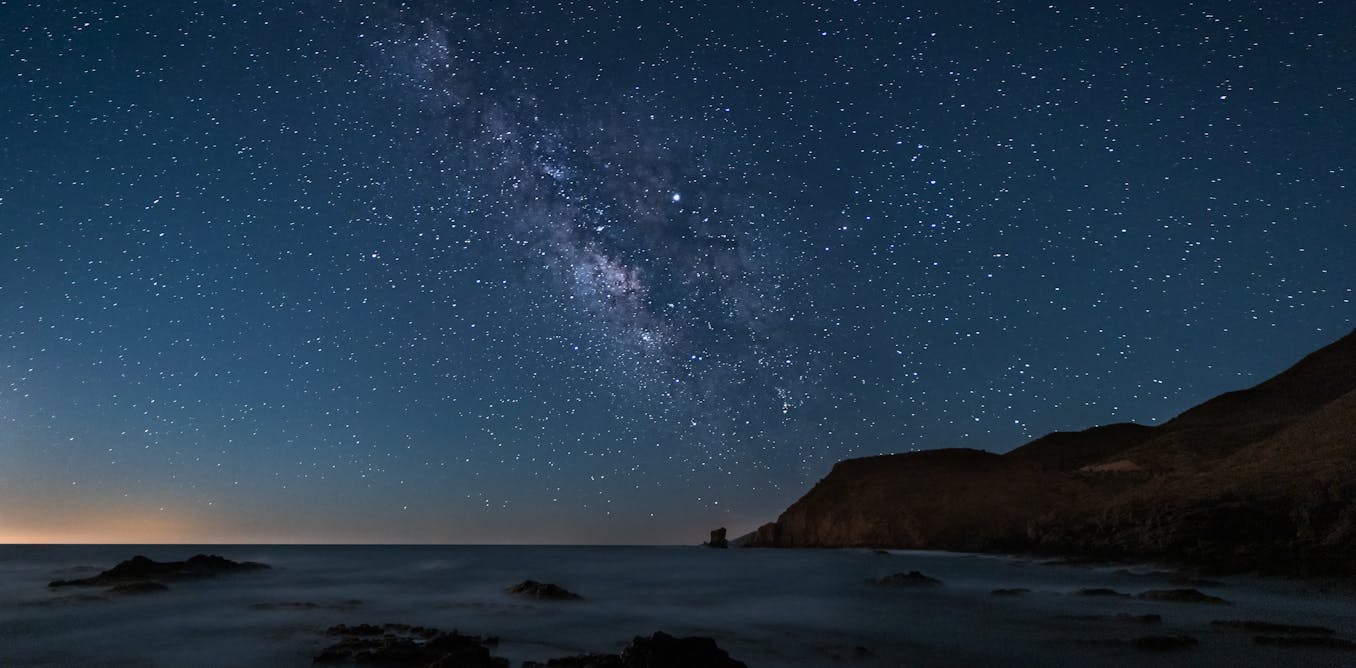Outdoor lighting for buildings, roads and advertising can help people see in the dark of night, but many astronomers are growing increasingly concerned that these lights could be blinding us to the rest of the universe.
An estimate from 2023 showed that the rate of human-produced light is increasing in the night sky by as much as 10% per year.
I’m an astronomer who has chaired a standing commission on astronomical site protection for the International Astronomical Union-sponsored working groups studying ground-based light pollution.
My work with these groups has centered around the idea that lights from human activities are now affecting astronomical observatories on what used to be distant mountaintops.
Falchi et al., Science Advances (2016), CC BY-NC
Hot science in the cold, dark night
While orbiting telescopes like the Hubble Space Telescope or the James Webb Space Telescope give researchers a unique view of the cosmos – particularly because they can see light blocked by the Earth’s atmosphere – ground-based telescopes also continue to drive cutting-edge discovery.
Telescopes on the ground capture light with gigantic and precise focusing mirrors that can be 20 to 35 feet (6 to 10 meters) wide. Moving all astronomical observations to space to escape light pollution would not be possible, because space missions have a much greater cost and so many large ground-based telescopes are already in operation or under construction.
Around the world, there are 17 ground-based telescopes with primary mirrors as big or bigger than Webb’s 20-foot (6-meter) mirror, and three more under construction with mirrors planned to span 80 to 130 feet (24 to 40 meters).
The newest telescope starting its scientific mission right now, the Vera Rubin Observatory in Chile, has a mirror with a 28-foot diameter and a 3-gigapixel camera. One of its missions is to map the distribution of dark matter in the universe.
To do that, it will collect a sample of 2.6 billion galaxies. The typical galaxy in that sample is 100 times fainter than the natural glow in the nighttime air in the Earth’s atmosphere, so this Rubin Observatory program depends on near-total natural darkness.
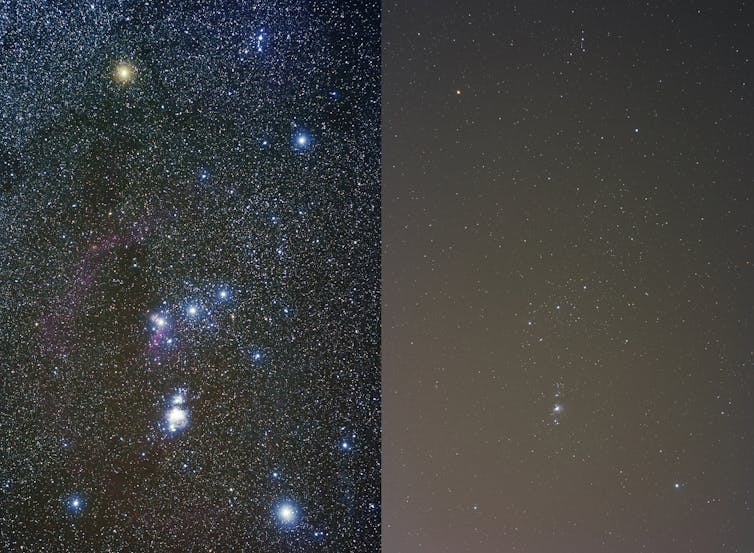
jpstanley/Flickr, CC BY
Any light scattered at night – road lighting, building illumination, billboards – would add glare and noise to the scene, greatly reducing the number of galaxies Rubin can reliably measure in the same time, or greatly increasing the total exposure time required to get the same result.
The LED revolution
Astronomers care specifically about artificial light in the blue-green range of the electromagnetic spectrum, as that used to be the darkest part of the night sky. A decade ago, the most common outdoor lighting was from sodium vapor discharge lamps. They produced an orange-pink glow, which meant that they put out very little blue and green light.
Even observatories relatively close to growing urban areas had skies that were naturally dark in the blue and green part of the spectrum, enabling all kinds of new observations.
Then came the solid-state LED lighting revolution. Those lights put out a broad rainbow of color with very high efficiency – meaning they produce lots of light per watt of electricity. The earliest versions of LEDs put out a large fraction of their energy in the blue and green, but advancing technology now gets the same efficiency with “warmer” lights that have much less blue and green.
Nevertheless, the formerly pristine darkness of the night sky now has much more light, particularly in the blue and green, from LEDs in cities and towns, lighting roads, public spaces and advertising.
The broad output of color from LEDs affects the whole spectrum, from ultraviolet through deep red.
The U.S. Department of Energy commissioned a study in 2019 which predicted that the higher energy efficiency of LEDs would mean that the amount of power used for lights at night would go down, with the amount of light emitted staying roughly the same.
But satellites looking down at the Earth reveal that just isn’t the case. The amount of light is going steadily up, meaning that cities and businesses were willing to keep their electricity bills about the same as energy efficiency improved, and just get more light.
Natural darkness in retreat
As human activity spreads out over time, many of the remote areas that host observatories are becoming less remote. Light domes from large urban areas slightly brighten the dark sky at mountaintop observatories up to 200 miles (320 kilometers) away. When these urban areas are adjacent to an observatory, the addition to the skyglow is much stronger, making detection of the faintest galaxies and stars that much harder.
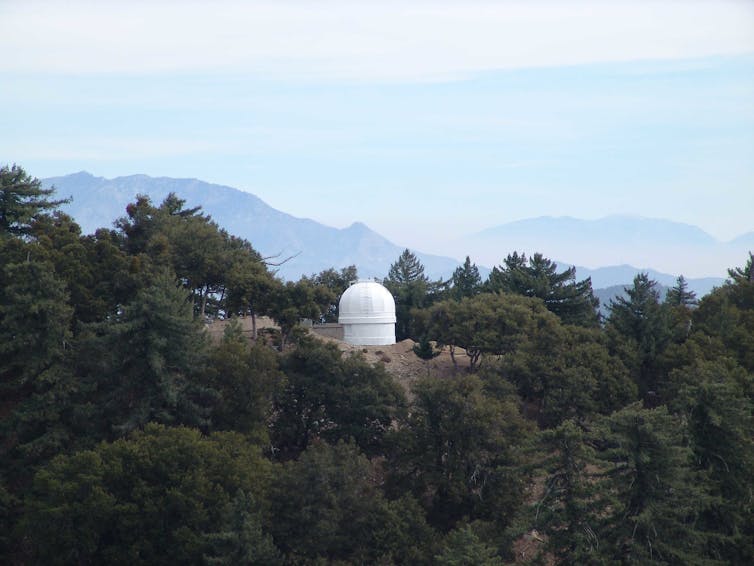
USDA/USFS, CC BY
When the Mt. Wilson Observatory was constructed in the Angeles National Forest near Pasadena, California, in the early 1900s, it was a very dark site, considerably far from the 500,000 people living in Greater Los Angeles. Today, 18.6 million people live in the LA area, and urban sprawl has brought civilization much closer to Mt. Wilson.
When Kitt Peak National Observatory was first under construction in the late 1950s, it was far from metro Tucson, Arizona, with its population of 230,000. Today, that area houses 1 million people, and Kitt Peak faces much more light pollution.
Even telescopes in darker, more secluded regions – like northern Chile or western Texas – experience light pollution from industrial activities like open-pit mining or oil and gas facilities.
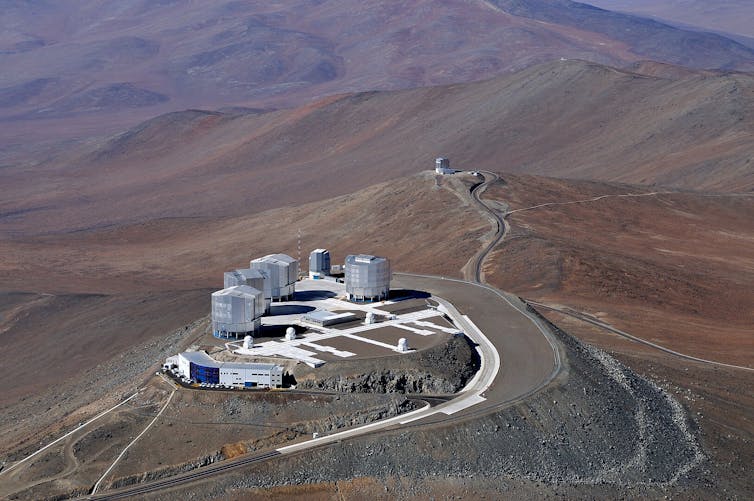
J.L. Dauvergne & G. Hüdepohl/ESO, CC BY-ND
The case of the European Southern Observatory
An interesting modern challenge is facing the European Southern Observatory, which operates four of the world’s largest optical telescopes. Their site in northern Chile is very remote, and it is nominally covered by strict national regulations protecting the dark sky.
AES Chile, an energy provider with strong U.S. investor backing, announced a plan in December 2024 for the development of a large industrial plant and transport hub close to the observatory. The plant would produce liquid hydrogen and ammonia for green energy.
Even though formally compliant with the national lighting norm, the fully built operation could scatter enough artificial light into the night sky to turn the current observatory’s pristine darkness into a state similar to some of the legacy observatories now near large urban areas.
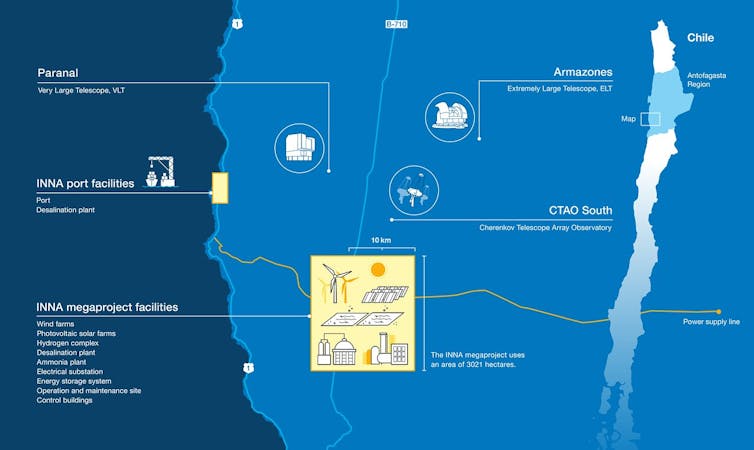
European Southern Observatory, CC BY-ND
This light pollution could mean the facility won’t have the same ability to detect and measure the faintest galaxies and stars.
Light pollution doesn’t only affect observatories. Today, around 80% of the world’s population cannot see the Milky Way at night. Some Asian cities are so bright that the eyes of people walking outdoors cannot become visually dark-adapted.
In 2009, the International Astronomical Union declared that there is a universal right to starlight. The dark night sky belongs to all people – its awe-inspiring beauty is something that you don’t have to be an astronomer to appreciate.
